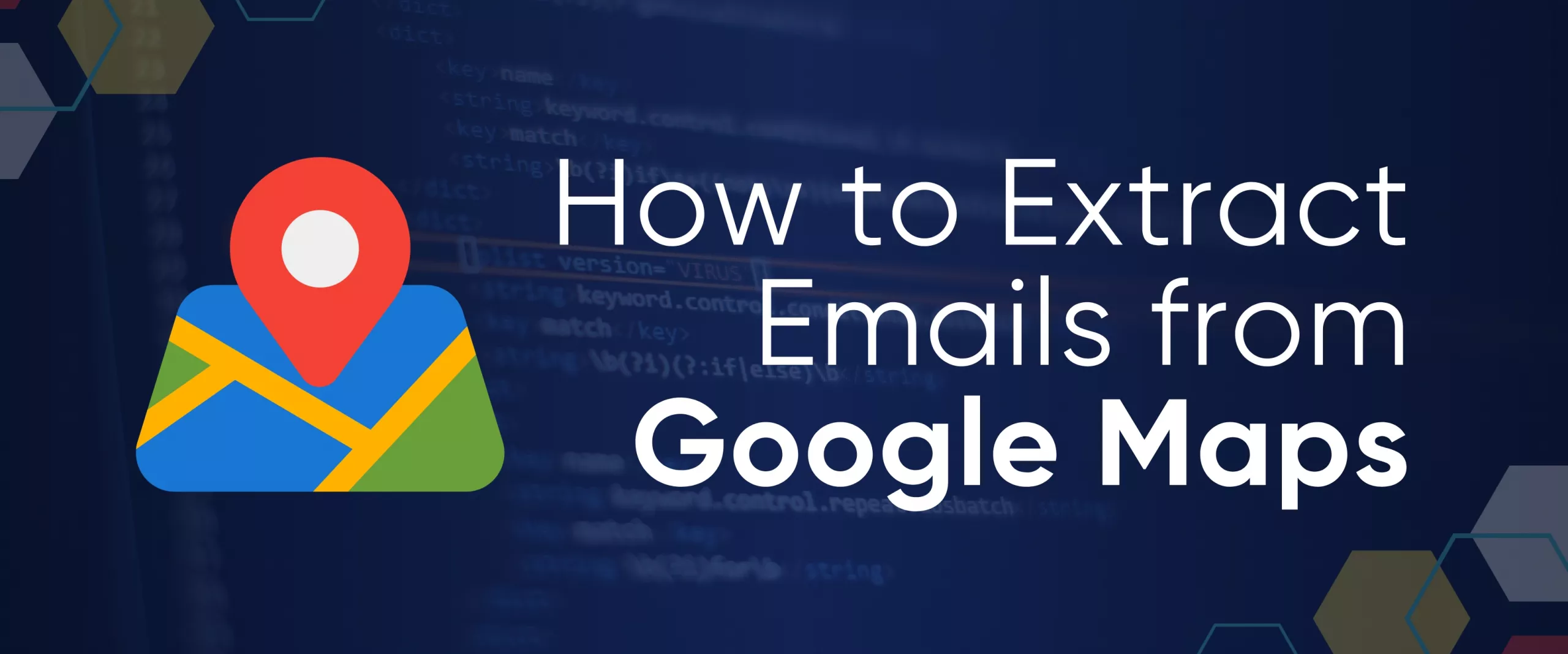Finding quality B2B leads can be a tough task for businesses. And one of the most popular ways to get new clients is by using cold email campaigns. However, manually collecting email addresses for B2B campaigns can be time-consuming and requires effort.
This article discusses the challenges of sourcing quality B2B leads and the importance of effective email extraction. In addition, we will explore different methods for extracting Google Maps data and evaluate their pros and cons.
Companies can optimize their lead-generation efforts by understanding these solutions while saving valuable time and resources. Let's dive in and discover different ways to extract Google Maps data efficiently.
Effortlessly extract Google Maps data – business types, phone numbers, addresses, websites, emails, ratings, review counts, and more. No coding needed! Download…
Effortlessly scrape and analyze customer reviews from Google Maps to gain actionable insights into customer sentiment, identify areas for improvement, and enhance…
Why Google Maps for B2B outreach?
Google Maps is one of the best platforms for B2B outreach because of the number of businesses whose data it can provide. According to Google Maps platform there are over 200 millions business and places there at September 2023.
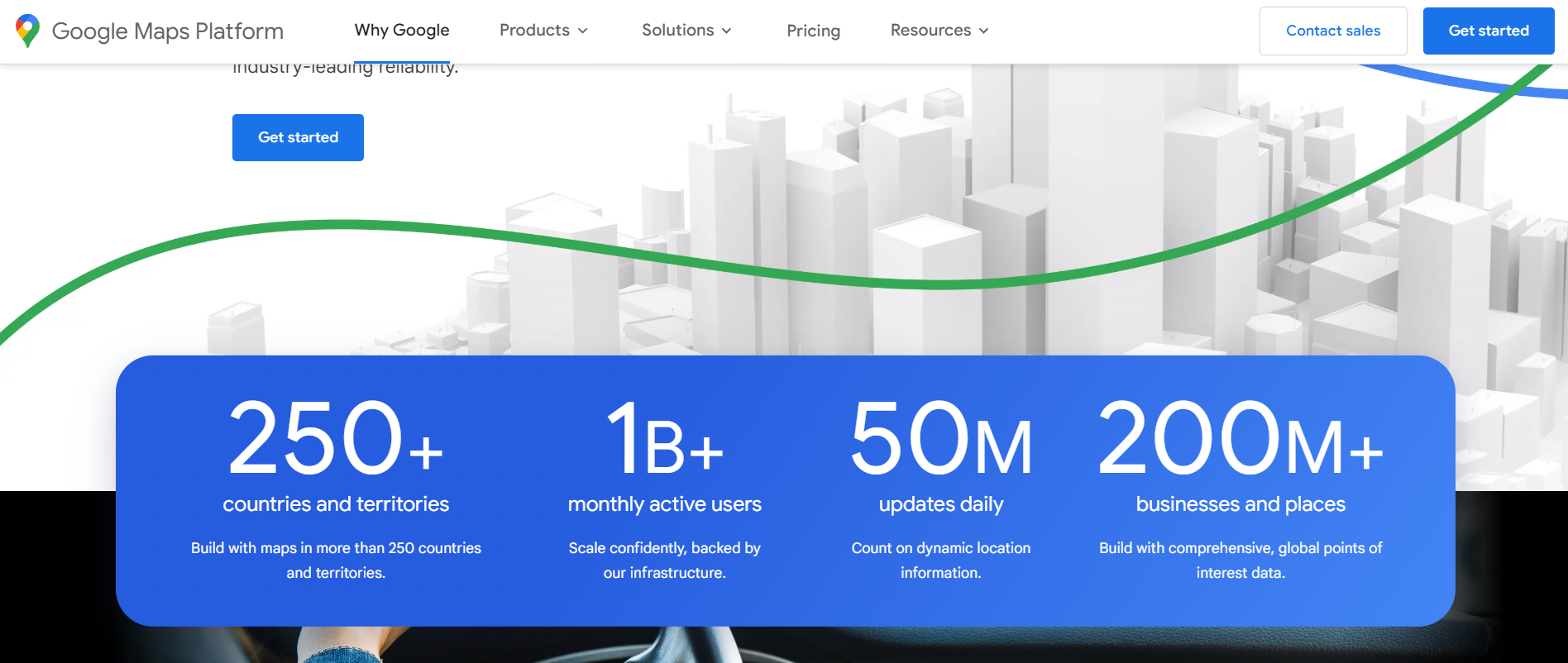
These statistics show that Google Maps is a powerful tool that can help businesses in various ways. And one of these ways is to collect information about various businesses, their contacts, reviews, addresses and email addresses of companies for later mass mailing of information or marketing, as well as to collect phone numbers for so-called cold calling.
In addition, you can use the information for creating an updated company contact database, crucial for sales and marketing. If you already have one, Google Maps data can help you refresh it with current business information.
Overall, extracting emails, phone numbers and other contact details from Google Maps can provide you with information about businesses that can be valuable for various business purposes, including marketing, sales, and partnering.
Also, using Google Maps is a good source for gathering such information because it is legal. At least as long as you use the information for research or personal use.
Now that we've highlighted the power of Google Maps as a B2B outreach tool and its legality for data collection, let's explore various methods to efficiently extract the valuable information it holds.
These methods range from more manual approaches for those who prefer hands-on control to automated solutions that can expedite the process. Depending on your specific needs and preferences, there's a suitable method for every business.
Method 1: Manual Email Extraction
The most accessible yet inconvenient way to extract data is to search and gather information manually. It is time-consuming, requiring attentiveness and manual processing of extensive data. But we will tell you what to do if you still decide to collect the data manually.
How to Extract emails Manually
First, open Google Maps and perform the query to get the data. Use keywords to describe the place and its location. Then, search the search results and click on the listing that matches the business or individual you want.
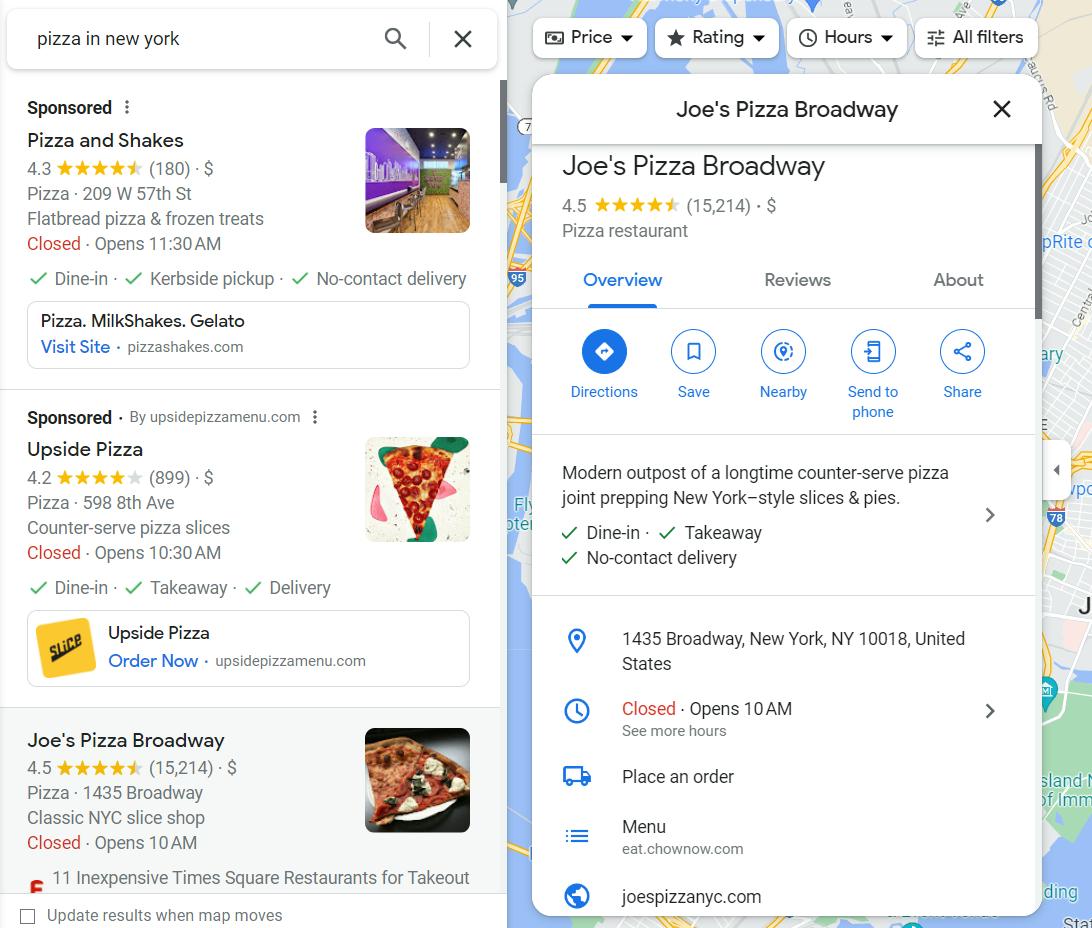
A more detailed view of the listing will open on the left side of the screen. Now look for the "Website" or "Website URL" field in the listing details. If the company's website is listed, click on it and go to the website. You can usually find email addresses in the footer of the page, but if it is not listed there, you can go to the "Contact Us" or "About Us" pages to find it.
To extract emails from multiple companies or individuals, return to the search results and click the following listing to repeat the process. Continue scraping data until you have collected all the email addresses you need.
Pros of Manual Extraction
This method has several advantages because you have complete control over the process. For example, as you collect the data, you can assess the company's relevance and weed out inappropriate companies at the collection stage.
In addition, this method is free, provided that you collect all the data yourself and do not hire employees to do so.
Cons of Manual Extraction
However, it also has several drawbacks. It is usually a very time-consuming and labor-intensive process. In addition, the constant, monotonous activity tires a person out, and there is the possibility of errors and the risk of missing potential leads.
Method 2: Email Extracting with Google Maps Scraper
Now that we've figured out how to collect data manually. Let's simplify the process and collect all the emails with Google Maps Scrapers.
How to Extract emails with Google Maps Scraper
Now, let's see how to automatically get all this information, including email addresses. To do this, sign up on Scrape-It.Cloud and go to the Scrapers section. When you sign up, you get 1000 free credits to try our functionality for free.
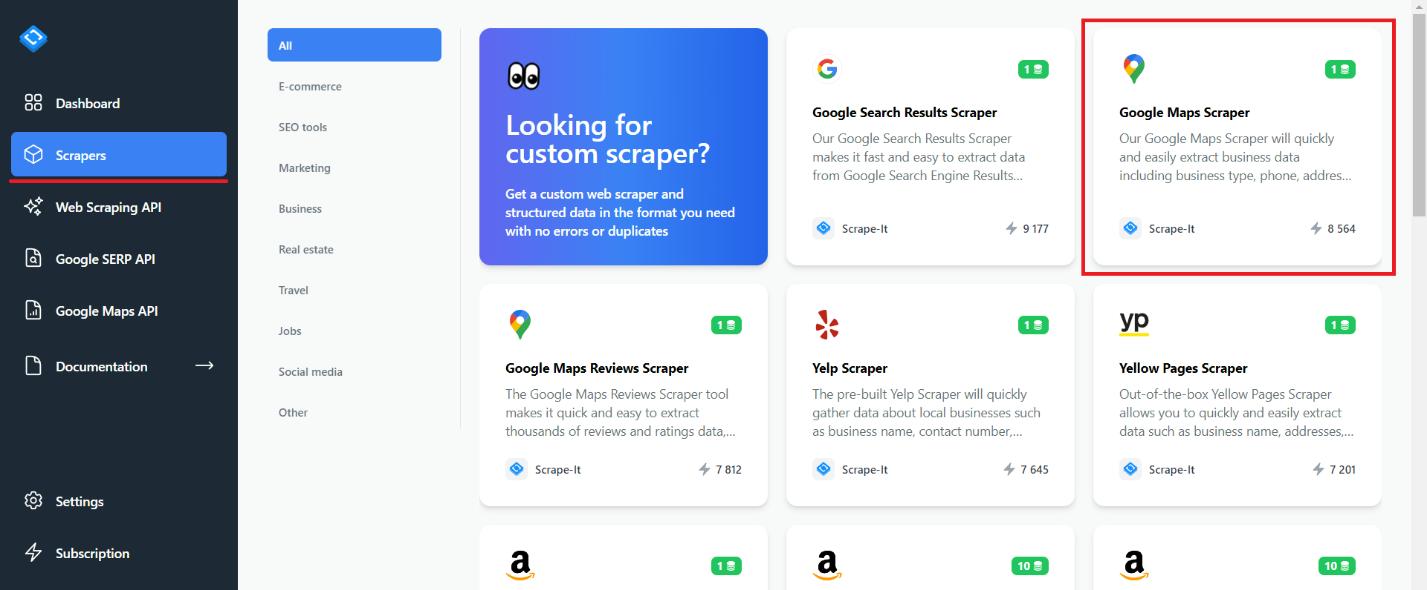
Here, you will find many of our no-code scrapers that everyone can use, even those with absolutely no programming skills. Find Google Maps Scraper and click on it. Let's look at the fields here, how the credits are calculated, and how to use them.
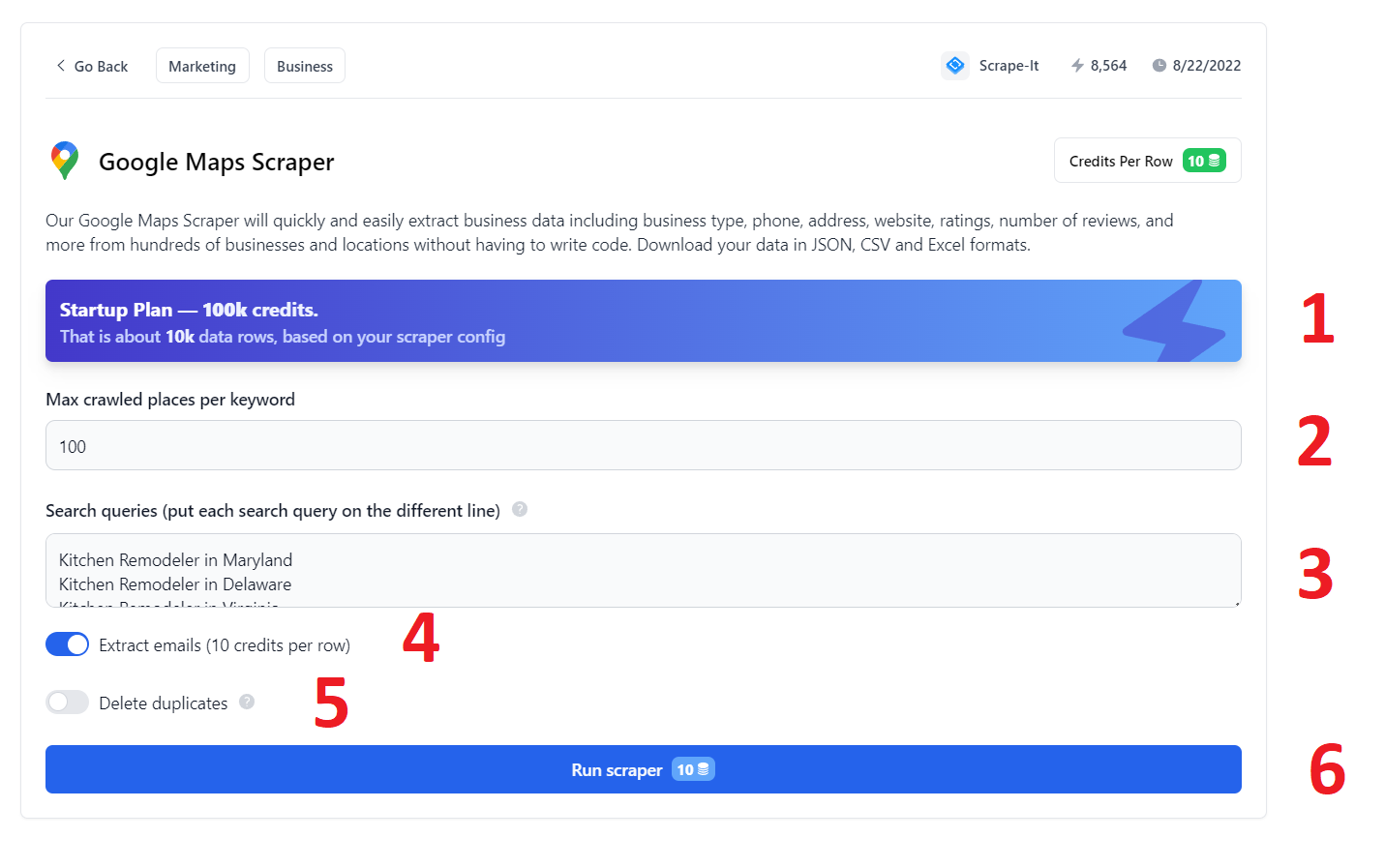
To make it easier to understand which element we are talking about, we have numbered them in the picture, and now we will tell you about each one:
- Given your current settings, this automatically calculates the number of requests you can make if you purchase the startup plan. In this example, you can get 100,000 rows of data given your current settings for only $45/month.
- Here, you need to specify the number of lines you want to get for each request. It's important to note that if you're using the trial version, you can get a maximum of 100 lines.
- Specify the keywords for which you want to get results. Each query must be entered on a new line.
- You will also need to specify whether you require email addresses. Please note that this will affect the cost of the request. If you want to get data without email addresses, it will cost one credit per line. For example, if you have two keywords and want to fetch 100 lines for each, it will amount to 200 credits. However, if you also need to gather email addresses, one line will cost 10 credits, resulting in a total request cost of 2,000.
- You can ignore the same organizations from different queries when choose this option.
- When all the settings are made, you only need to click the "Run Scraper" button, which indicates the cost per data line at the current settings.
When all the parameters are specified and you click the "Run Scraper" button, you will see information about the request, its start time, and duration in the top right corner of the screen. After completing the request, you can download the results in CSV, Excel, or JSON format.

After that, you can open the finished document and ensure all necessary data, including business name, contact, email address, and other business information, is in the received CSV file. So, you can use it for lead generation, email marketing, or business listings now.
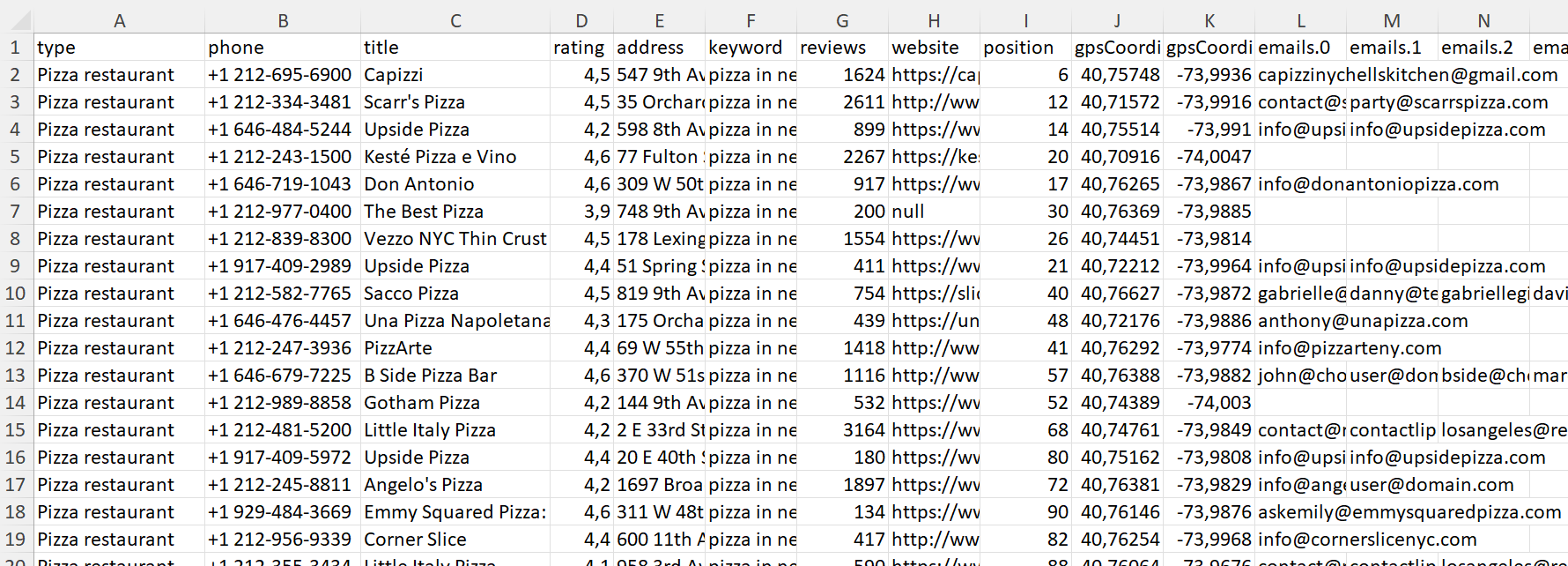
It's important to note that we won’t be able to collect emails if it is not specified.
Pros of Extraction with Google Maps Scraper
This method is more convenient and saves time. Due to the fact that the scraper performs all actions on the Scrape-It.Cloud site, your IP will not be banned. You can safely enter the country, city, and keyword, close the tab, and return to get the extracted data about a business category, phone number, email address, and other information after a while.
This approach minimizes manual intervention and does not require much technical knowledge. Since you are using a no-code scraper, minimal browser skills will suffice.
Cons of Extraction with Google Maps Scraper
Unlike the previous option, using a no-code scraper is not free. However, the price is quite reasonable. For example, you can collect up to 5,000 emails for $30. You also get 1000 credits when you sign up and can collect up to 100 emails for free.
Find and extract emails from any website with ease. Build targeted email lists for lead generation, outreach campaigns, and market research. Download your extracted…
Yellow Pages Scraper is the perfect solution for quickly and easily extracting business data! With no coding required, you can now scrape important information from…
Method 3: Build a Scraping Tool Using the API
Using the API is a more flexible tool for extracting email addresses. For example, you can specify the resource and the information you want to receive.
How to Extract Emails Using API
You can use the Google Maps API and web scraping API to create an email scraper. But first, you need to decide whether to write your code or use an integration tool like Zapier. Either way, the principle of how the scraper works is the same:
- Using the Google Maps API, collect links to the websites of businesses related to your topic of interest.
- Using the Web Scraping API, trawl through all the collected links and collect data about company emails from them.
- Save all the scraped data into a spreadsheet.
This is a relatively easy task, and we will provide details and examples of implementation in our next article on extracting emails from any website.
Pros of Using API for Scraping Emails
Unlike previous options, using this API gives you complete freedom to customize your web scraper. This approach also allows you to scale your project to meet your needs. You have complete control over how the scraper works and what it extracts, allowing you to tailor it to different tasks and project sizes.
Cons of Using API for Scraping Emails
You will need at least basic programming skills and an understanding of how the API works to use the API. There may also be additional costs associated with using this method.
Other ways to get business contact details
In addition to the methods of email collection discussed here, there are several others. However, they are less popular, less flexible, or tend to be more expensive.
Browser Extensions
Browser extensions are a widely used data collection tool. So, you can easily find any Chrome extension for site scraping. However, despite their popularity, it is essential to remember that not all extensions are suitable for effective email address collection.
In most cases, using extensions to scrape emails will give you the information you need and a lot of unnecessary data that will need to be manually cleaned and processed later. This can add complication and slow down the process.
Using browser extensions to collect email addresses can be a handy tool, but this approach can have positive and negative aspects. As mentioned, this method is suitable for those without programming skills. Also, using browser extensions is more straightforward than collecting emails manually.
However, this method has limited functionality and several restrictions on the number of requests. The most convenient extensions are paid for and are expensive. One of the most significant drawbacks is that the browser must run while the data is collected. This can be inconvenient if you have a lot of requests.
Ready email Lists
Buying a ready-made database of email addresses may seem like a quick and easy solution, but there are some essential aspects to consider:
- Data quality and relevance. Off-the-shelf databases only sometimes guarantee the quality and relevance of the information. This can lead to you receiving outdated or invalid email addresses, reducing the effectiveness of your communications.
- Data re-use. Suppose the base seller is not bona fide. In that case, they may sell the same data to multiple buyers without checking and updating it beforehand, increasing competition and reducing the value of the data.
As a result, although the data may appear easy to obtain, the databases purchased may be less valuable and practical than planned. This underlines the importance of being careful and reliable when selecting data sources for your business or marketing efforts. Make an effort to collect your data and keep your contacts up to date to improve the quality and impact of your communications.
Effortlessly extract Google Maps data – business types, phone numbers, addresses, websites, emails, ratings, review counts, and more. No coding needed! Download…
Effortlessly scrape and analyze customer reviews from Google Maps to gain actionable insights into customer sentiment, identify areas for improvement, and enhance…
What Are The Best Ways To Extract Emails From Google Maps?
The method for scraping Google Maps data depends on your project's objectives, requirements, and scope. To help you make this choice, we have provided a method comparison chart that summarizes all the options discussed above and outlines their main characteristics. This will help you decide which method best suits your needs and expectations.
| Method | Pros | Cons |
|---|---|---|
| Manual Email Extraction | - Full control - Filtering capability - Free (if done yourself) |
- Time-consuming - Monotonous and error-prone - Risk of missing leads |
| Google Maps Scraper | - Convenience and automation - Minimal programming skills |
- Paid (reasonable) - Requires basic technical understanding |
| API-Based Scraping | - Full customization - Scalability |
- Requires programming skills - Possible additional costs |
| Browser Extensions | - Easy for non-programmers - User-friendly |
- Collects unnecessary data - Limited capabilities and requests |
| Ready Email Lists | - Instant access - Convenient |
- Low data quality and relevance - Risk of data reuse |
As mentioned above, сhoosing a method for collecting data from Google Maps should be based on your specific goals and resources. Choosing a manual approach or using a scraper without code may be an attractive choice if your goal is to quickly and easily collect a few email addresses, phone numbers, or social media links.
However, if you need to collect a significant number of email addresses or if you have programming skills and want more personalized functionality, using specialized APIs will prove to be a much more efficient and scalable solution. These methods not only save time but give you access to more data, providing a comprehensive view that can prove invaluable to your B2B engagement and marketing strategy.
Ultimately, the method you choose should match your business goals and the data you want to collect. Keep in mind that each of these methods has its merits, and by making an informed choice, you can harness the full power of Google Maps to effectively and efficiently expand your B2B efforts.
